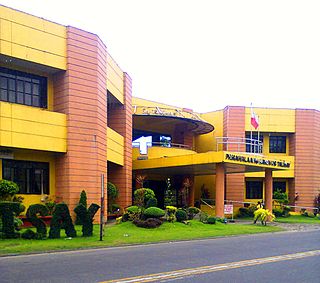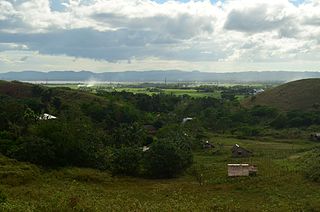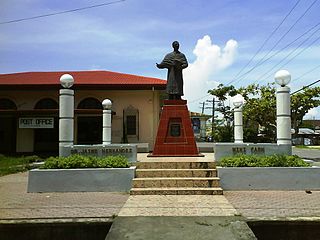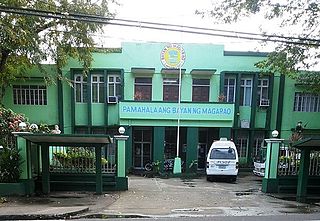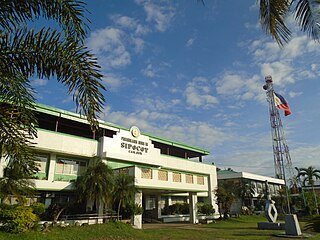San Lorenzo Ruiz | |
|---|---|
| Municipality of San Lorenzo Ruiz | |
 Map of Camarines Norte with San Lorenzo Ruiz highlighted | |
Location within the Philippines | |
| Coordinates: 14°02′21″N122°52′06″E / 14.0392°N 122.8683°E | |
| Country | Philippines |
| Region | Bicol Region |
| Province | Camarines Norte |
| District | 2nd district |
| Founded | November 9, 1970 |
| Renamed | February 10, 1989 |
| Named for | San Lorenzo Ruiz |
| Barangays | 12 (see Barangays) |
| Government | |
| • Type | Sangguniang Bayan |
| • Mayor | Nelson P. delos Santos |
| • Vice Mayor | Arnulfo D. Bacuño |
| • Representative | Marisol C. Panotes |
| • Municipal Council | Members |
| • Electorate | 11,121 voters (2022) |
| Area | |
| • Total | 119.37 km2 (46.09 sq mi) |
| Elevation | 219 m (719 ft) |
| Highest elevation | 947 m (3,107 ft) |
| Lowest elevation | 35 m (115 ft) |
| Population (2020 census) [3] | |
| • Total | 15,757 |
| • Density | 130/km2 (340/sq mi) |
| • Households | 3,629 |
| Economy | |
| • Income class | 5th municipal income class |
| • Poverty incidence | 31.61 |
| • Revenue | ₱ 97.02 million (2020) |
| • Assets | ₱ 275.4 million (2020) |
| • Expenditure | ₱ 74.97 million (2020) |
| • Liabilities | ₱ 56.44 million (2020) |
| Service provider | |
| • Electricity | Camarines Norte Electric Cooperative (CANORECO) |
| Time zone | UTC+8 (PST) |
| ZIP code | 4610 |
| PSGC | |
| IDD : area code | +63 (0)54 |
| Native languages | Central Bikol Tagalog |
| Patron saint | San Lorenzo Ruiz |
San Lorenzo Ruiz, officially the Municipality of San Lorenzo Ruiz (Central Bikol : Banwaan kan San Lorenzo Ruiz; Tagalog : Bayan ng San Lorenzo Ruiz), is a 5th class municipality in the province of Camarines Norte, Philippines. According to the 2020 census, it has a population of 15,757 people. [3]
Contents
It was established as the Municipality of Imelda in 1970, through R.A. 6144, constituting the barrios Daculangbolo, Laniton, Langga, Maisog, Dagotdotan, Mampurog, Matacong, in the Municipality of Daet, and San Isidro, San Antonio, San Ramon, Manlimonsito, Salvacion in the Municipality of Basud. [5]
Imelda was renamed on February 10, 1989, in honor of San Lorenzo Ruiz, the first Filipino saint venerated in the Roman Catholic Church, canonized on October 18, 1987.













